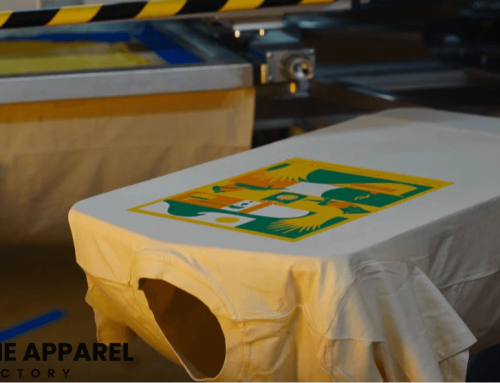
We’ve all been there—you find the perfect jacket, only to realize it’s a bit too big. Whether it’s a puffer jacket, a cozy fleece, or a classic bomber, an oversized fit can throw off your look and comfort. But don’t worry—you don’t have to give up on your favorite jacket just yet!
With the right techniques, you can shrink your jacket to achieve a better fit without damaging the fabric. From using heat to adjusting specific areas, this guide will walk you through easy and effective methods for how to shrink a jacket with different fabrics. Let’s get started!
How to Shrink a Jacket
If you have a jacket that is too big, shrinking it can help achieve a better fit. Here are easy steps for shrinking different types of jackets:
1. Check the Fabric Label
Before attempting to shrink your jacket, check the care label to determine the fabric type. Cotton and wool jackets shrink easily, while polyester and nylon are more resistant. Leather jackets require special care, as too much heat or moisture can cause cracking or stiffness. If your jacket has a lining, consider how it might react to heat. Knowing the fabric ensures you use the safest and most effective shrinking method.
2. Wash in Hot Water
Machine wash the jacket on the hottest setting to loosen the fibers. Use a mild detergent and avoid fabric softeners, as they can reduce shrinkage. For wool jackets, consider hand-washing in hot water instead of machine washing to prevent excessive shrinkage or damage. If shrinking a leather jacket, never submerge it in water—use a damp cloth to target specific areas instead.
3. Dry on High Heat
After washing, place the jacket in the dryer in the highest heat setting. The heat will help further shrink the fibers. Check the fit periodically to prevent excessive shrinking. If you are working with a wool jacket, use medium heat to avoid fiber damage. Leather jackets should never be dried in a machine; instead, allow them to air-dry at room temperature.
4. Steam or Iron for Spot Shrinking
If you only need to shrink certain areas, use a steam iron or a hairdryer. Lightly dampen the fabric and apply heat to targeted areas, such as sleeves, cuffs, or waistbands. Keep the iron or dryer moving to prevent burns or damage. This method works well for synthetic jackets that don’t shrink easily in the wash. For leather jackets, use a misting spray and a hairdryer on low heat.
5. Repeat if Needed
If the jacket hasn’t shrunk enough, repeat the process. However, be cautious not to over-shrink, as excessive heat and washing can weaken the fabric. Some materials, like polyester, may require multiple cycles to achieve noticeable shrinkage. Always allow the jacket to fully dry and cool before assessing the final fit.
How to Shrink Different Types of Jackets
However, the method you use depends on the fabric type. Some fabrics, like cotton and wool, shrink easily with heat and water, while synthetic materials require a gentler approach. Using the right technique ensures effective shrinking without damaging the jacket.
1. How to Shrink a Denim Jackets
Denim is a cotton-based fabric, making it relatively easy to shrink. Wash the jacket in hot water and then dry it on the highest heat setting in the dryer. For extra shrinkage, repeat the process. If you only need to shrink specific areas, use a steam iron or soak the jacket in boiling water for 10 minutes before drying.
2. How to Shrink a Leather Jackets
Shrinking leather requires a gentle approach to avoid cracking or stiffness. Lightly mist the jacket with water, then use a hairdryer on low heat to dry it while wearing it for a custom fit. Avoid machine washing or high heat, as it can damage the material. Let it air dry naturally and apply a leather conditioner afterward to maintain flexibility.
3. How to Shrink a Bomber Jackets
Most bomber jackets are made from polyester or nylon, which resists shrinking. Wash the jacket in warm water, then dry on medium heat to encourage slight shrinkage. Avoid excessive heat, as it can damage synthetic fibers. If the jacket has ribbed cuffs or elastic waistbands, it may not shrink as much as the main fabric.
4. How to Shrink a Puffer Jackets
Puffer jackets contain insulation or downfilling, which can be ruined by high heat. Instead, wash in warm water on a gentle cycle, then tumble dry on low heat with dryer balls to prevent the filling from clumping. Avoid hot water and high heat drying, as it can damage the insulation and alter the jacket’s shape.
5. How to Shrink a Fleece Jackets
The fleece jackets are sensitive to high temperatures, so use warm water and medium heat drying for controlled shrinkage. Avoid over-drying, as too much heat can cause the fleece to become stiff or lose its softness. If additional shrinkage is needed, repeat the process but monitor closely.
6. How to Shrink a High Visibility Jackets
Most high-visibility jackets are made from polyester with reflective strips, making them shrink-resistant. Wash in cold or warm water and air dry or tumble dry on low heat to prevent damage to the reflective elements. Avoid high heat, as it can cause the reflective tape to peel.
7. How to Shrink Sherpa Jackets
Sherpa jackets have a soft, fluffy lining that can be damaged by excessive heat. Wash in cold or warm water on a gentle cycle and dry on low heat to preserve the sherpa lining. Avoid high heat, as it can cause matting or stiffness in the fabric.
8. How to Shrink a Lightweight Jackets
The shrinking process for lightweight jackets depends on the fabric type. Cotton lightweight jackets shrink best with hot water and high heat drying, while synthetic lightweight jackets require warm water and medium heat drying to prevent damage.
9. How to Shrink an Insulated Jackets
Since insulated jackets contain synthetic or down filling, shrinking them requires caution. Wash on a gentle cycle in warm water and dry on low heat with dryer balls to maintain the insulation’s loft. Avoid high heat, which can damage the insulation and cause uneven shrinkage.
10. How to Shrink a Soft Shell Jackets
Softshell jackets are typically made of polyester or spandex blends, which are resistant to shrinking. Wash in warm water and dry on low to medium heat to achieve slight shrinkage. Avoid high heat, as it can weaken the fabric’s flexibility and water-resistant properties.
Mistakes to Avoid
Avoid these mistakes when learning how to shrink a jacket:
-
Ignoring the Care Label
Always check the care label on your long padded coat or jacket for specific instructions.
-
Using Excessive Heat
High heat can damage synthetic fabrics or ruin the jacket.
-
Over-Shrinking
Shrinking too much may render your lightweight down jacket with a hood unwearable.
Where to Buy Stylish and High-Quality Jackets
Upgrade your wardrobe with top-quality jackets from The Apparel Factory! Whether you’re looking for rugged durability, sleek designs, or ultimate warmth, we offer a wide range of styles from trusted brands like Carhartt, Port Authority, Dickies, Sport-Tek, and Spyder.
Make your jacket truly one-of-a-kind with our customization services, including embroidery, laser etching, screen printing services, appliqué service, and heat transfer. Whether for work, sports, or everyday wear, find the perfect jacket that fits your style and needs. Shop now and elevate your outerwear game with comfort, style, and personalization!
Conclusion
Shrinking a jacket doesn’t have to be a guessing game—by following the right steps based on your jacket’s fabric, you can achieve a better fit without compromising its quality. Whether you’re working with denim, fleece, or leather, using heat and water carefully can help you tailor your jacket to your ideal size. Just remember to check the fabric label, take it slow, and avoid excessive heat to prevent damage.
And if you’re looking to upgrade your outerwear collection, The Apparel Factory has you covered with high-quality jackets and customization options. Why settle for a jacket that doesn’t fit when you can shrink it or shop for the perfect one? Take control of your style today!
Published on:
February 13, 2025





